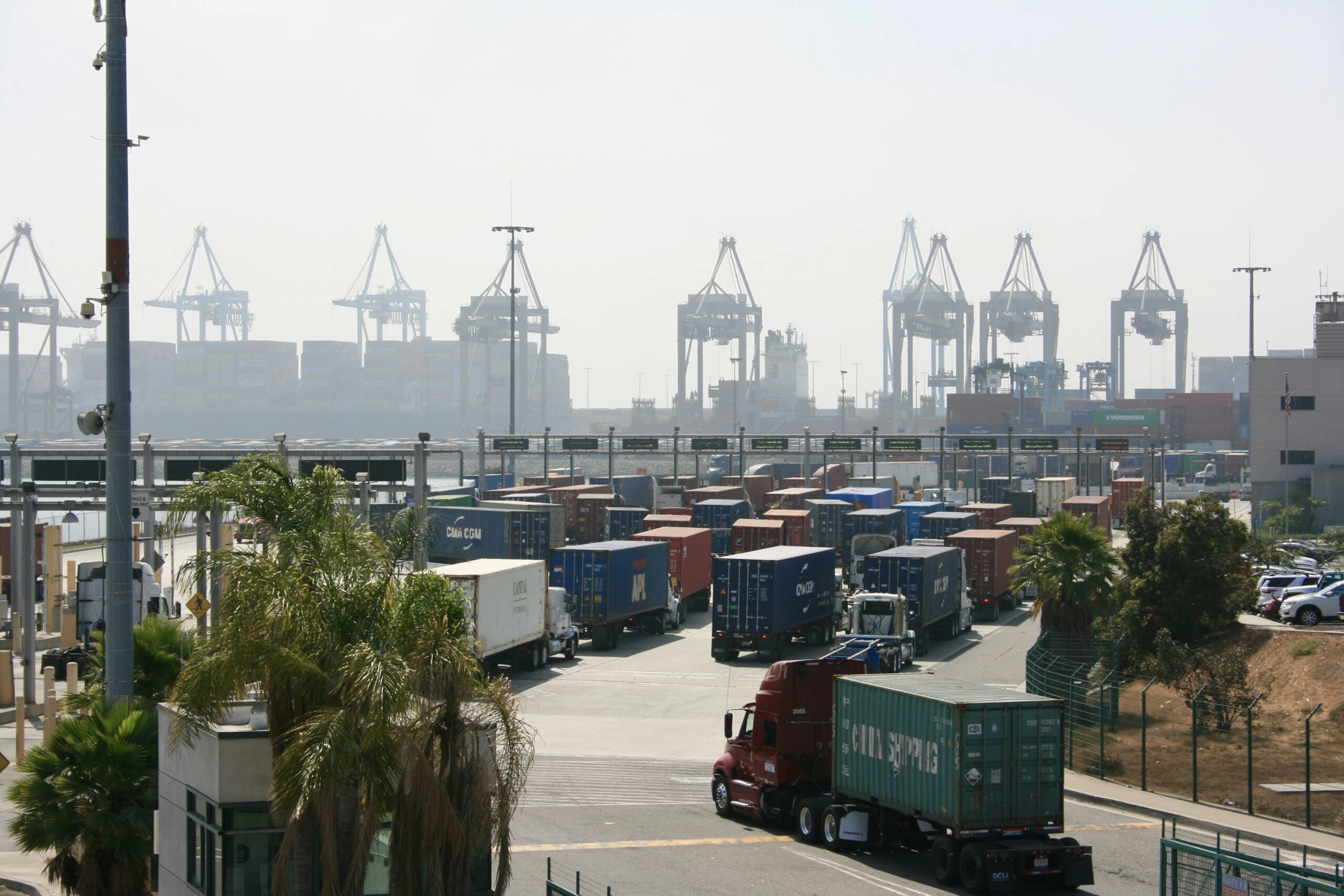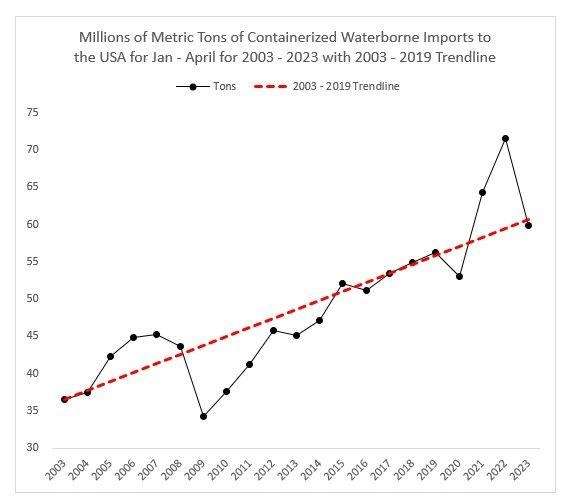Imports in the U.S. are ‘not dropping off a cliff’

U.S. containerized throughput continues to trend far behind the bumper crop years of 2021 and 2022, but the situation is not as dire as some analysts suggest.
Indeed, one supply chain expert believes that the current numbers reflect a market correction toward a trend that has been developing for years.
“While I’ve read many articles frame the decline in containerized imports to the USA as a ‘collapse’ or ‘falling off a cliff’, the data so far for 2023 suggests a far less catchy headline: regression to the mean,” said Jason Miller, supply chain professor at Michigan State University.
Professor Miller has produced a graph showing the upward trend of U.S. containerized imports over a 20-year period, with occasional movements up or down from the trend but always reverting back to it.
He calls attention to the years 2020 through 2023, saying that 2021 and especially 2022 are “outliers” in terms of the number of imports, meaning they were unusually high those years. But he says that “2023 is perfectly on that long-term trendline and that is the “textbook definition of regression to the mean.”
He acknowledges that regression to the mean of containerized trade is “painful” but he insists that we are not in a situation today that looks anything like the global financial crisis of 2008 and especially 2009 which saw imports “fall off a cliff.”
In fact, he claims that on a monthly pattern 2023 is “back to pre-Covid seasonal patterns” as April 2023 saw metric tonnage of containerized imports 7.4% above April 2019 levels.
By way of an outlook, Miller claims that shippers should plan for containerized import activity “about 5-10% above 2019 levels” for the rest of 2023.









